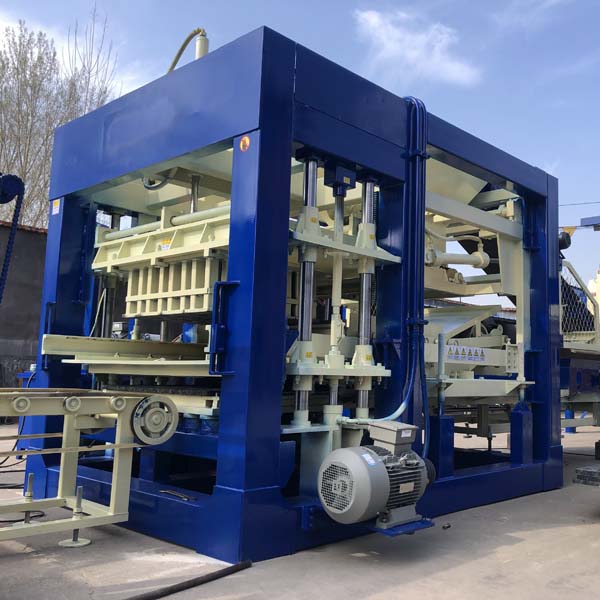
Innovations in Concrete Block Design and Aesthetics
Concrete blocks, long known for their durability and structural capabilities, have often been associated with utilitarian and unattractive designs. However, recent innovations in concrete block design and aesthetics have challenged these preconceptions, offering architects, builders, and designers exciting new possibilities for creating aesthetically pleasing and visually striking structures. In this exploration, we will delve into the latest advancements in concrete block design, the use of new materials and techniques, and how these innovations are shaping the world of architecture and construction.
I. Introduction to Concrete Blocks and Aesthetics
Concrete blocks, also known as concrete masonry units (CMUs), have been a staple in construction for their strength, fire resistance, and affordability. Historically, they were primarily used for structural purposes and were not considered for their aesthetic value. However, as architecture and design have evolved, so has the perception of concrete blocks.
A. Traditional Concrete Block Design
Traditional concrete blocks were typically plain and utilitarian, lacking in aesthetic appeal. They were often used as the inner core of a wall and covered with other materials like stucco or brick to improve appearance.
B. Changing Perceptions
In recent years, there has been a shift in how concrete blocks are perceived. Architects and designers have recognized the potential of concrete blocks as a design element, leading to innovative approaches to their use.
II. Innovations in Concrete Block Design
A. Texture and Surface Treatments
1. Textured Blocks: Concrete blocks are now available with a wide range of textures, from rough and rustic to smooth and polished. These textures add depth and visual interest to walls and façades.
2. Surface Coatings: Special coatings can be applied to concrete blocks to enhance their appearance, protect against moisture, and provide various finishes, including natural stone, wood, or metallic effects.
B. Colors and Pigments
1. Integral Pigments: Concrete blocks can be manufactured with integral pigments that color the material throughout, offering a consistent and lasting color that doesn’t fade over time.
2. Stains and Dyes: Stains and dyes can be applied to concrete blocks, allowing for a broader spectrum of colors and artistic effects.
C. Geometric and Sculptural Blocks
1. Custom Molds: Advances in mold-making technology allow for the creation of custom concrete block designs, including intricate geometric patterns and sculptural elements.
2. Modular Blocks: Modular concrete blocks with unique shapes and interlocking features enable architects and designers to create visually striking, three-dimensional walls and surfaces.
D. Sustainable Materials
1. Recycled Aggregates: The use of recycled aggregates in concrete block production not only reduces environmental impact but also adds character to the blocks with varied textures and colors.
2. Natural Additives: Incorporating natural additives like crushed seashells or volcanic ash can introduce unique textures and hues to concrete blocks.
III. Applications of Innovative Concrete Block Design
A. Residential Architecture
Innovative concrete block designs are being used in residential architecture to create distinctive and modern homes. Textured and colored blocks, when combined with thoughtful design, provide an artistic element to residential structures.
B. Commercial Buildings
Commercial buildings, such as offices, retail spaces, and hotels, are incorporating decorative concrete blocks as architectural features both inside and outside. These blocks can serve as partition walls, façade elements, or interior design focal points.
C. Public Spaces
Public spaces, including parks, plazas, and civic buildings, are using decorative concrete blocks to enhance the aesthetics of these areas. Modular and sculptural blocks are particularly popular for creating unique and interactive public installations.
D. Landscape Architecture
In landscape architecture, concrete blocks are employed for retaining walls, seating, and sculptural elements. The aesthetic versatility of concrete blocks allows them to blend seamlessly with natural surroundings or serve as bold design statements.
IV. Benefits of Innovative Concrete Block Design
A. Aesthetic Versatility
Innovative concrete block designs offer an extensive range of visual possibilities, allowing architects and designers to achieve specific aesthetic goals.
B. Sustainability
The use of recycled materials, natural additives, and environmentally friendly production processes aligns with sustainability principles, making these blocks an eco-conscious choice.
C. Durability
Concrete blocks are inherently durable and resistant to weather, fire, and pests, ensuring that innovative designs maintain their appeal over time.
D. Cost-Effectiveness
Concrete blocks remain cost-effective compared to some alternative building materials, providing both aesthetic appeal and affordability.
V. Challenges and Considerations
A. Maintenance
Depending on the surface treatment and coatings used, some decorative concrete blocks may require periodic maintenance to retain their appearance.
B. Installation Expertise
Achieving the desired aesthetic results with innovative concrete block designs may require skilled installation, which should be factored into project planning.
C. Local Regulations
Local building codes and regulations may affect the choice of concrete block design and materials, so it’s essential to consult with authorities and professionals.
VI. Conclusion
Innovations in concrete block design and aesthetics have transformed these humble building materials into versatile and visually appealing elements for architectural and design projects. Whether used in residential homes, commercial buildings, public spaces, or landscape architecture, decorative concrete blocks offer an exciting canvas for creativity and expression. With sustainability, durability, and cost-effectiveness on their side, innovative concrete block designs are likely to continue shaping the world of architecture and construction, providing architects, builders, and designers with exciting tools to realize their visions.
